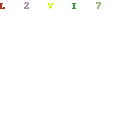By Muna Shikaki
Azizah ($8.50) is very much a glossy women’s magazine. It has articles on fashion, food, travel, books and relationships. Its 112 pages contain articles, photographs, and illustrations, and a quarter
 of its pages are devoted to ads. The magazine’s “Well-Being” section covers topics like massage and aromatherapy; its “Destinations” section mentions places to pray throughout the world (including one on mosques in the U.S. Virgin Islands).
of its pages are devoted to ads. The magazine’s “Well-Being” section covers topics like massage and aromatherapy; its “Destinations” section mentions places to pray throughout the world (including one on mosques in the U.S. Virgin Islands).Fashion sections have models wearing modest clothes, some with backdrops of the beach. A long garment that covers most of the body from the neck down, the djilbab, is modeled with a college backdrop (“This denim-look djilbab is perfect for the campus.”) A “wrap and snap” black djilbab looks as if it could be put on in a second.
Yet the magazine also delves into serious topics such as AIDS in the Muslim community, birth control in Islam and polygyny. It includes headlines like “America’s First Muslimah Judge” and “How Inclusive is the Muslim Community of the Disabled?”
...Though the magazine doesn’t posit itself as a controversial magazine, it is not complacent. Sometimes, the simple act of covering a topic can be seen as taking a stand.
But some of the most important articles are not necessarily the most provocative ones. “How Inclusive Is the Muslim Community of the Disabled?” questions the absence of ramps for wheelchairs in mosques. In the same issue, a disabled woman writes a heart-wrenching story about making the pilgrimage to Mecca in her wheelchair.
The article, and the magazine in general, reflects a “multiple critique,” a term championed by Miriam Cooke, professor of modern Arabic literature and culture at Duke University, for the way in which Islamic feminists critique Western culture and Islamic patriarchy without abandoning their religious identities. “The ability [of Muslim women] to say, ‘I don’t like what the Saudis do’ doesn’t mean I can’t also say ‘I don’t like what Bush or a Muslim cleric is doing,’” Cooke said. “I can talk about all these various communities to which I belong.”
 Muna Shikaki, who wrote the above in the New York Review of Magazines, is one of Alarabiya's corespondents in North America.
Muna Shikaki, who wrote the above in the New York Review of Magazines, is one of Alarabiya's corespondents in North America.Her colleague Nadia Bilbasey had a report on a teen-Azizah magazine: Muslim Girl, which both the non-hijabi (wearing an 'Allah' pendant) and the muhajaba girls she interviewed enthused over.
The Magazine's Editor-in-Chief, Ausma Khan, was interviewed by Alsarq Al-awsat
What do you hope to achieve?
So many things! We want to make a difference in the lives of American Muslim girls by giving them a forum where they can express themselves and see their stories told in a positive and celebratory spirit. We want to give Muslim girls the tools for empowerment, education and enlightenment. It can be really difficult and isolating for Muslim youth when the only images they see of themselves are negative or frightening ones.
We are seeking to provide a counter-point and we hope to bring out all those wonderful stories about Muslims that are rarely told. For example, one Muslim girl helped others in Malawi through the Peace Corps, another American Muslim girl worked with tsunami victims in Indonesia. We also feature an amazingly accomplished Muslim woman who is a BBC news anchor, a lawyer and journalist (Mishal Hussain). There are wonderful things that Muslim girls and women are doing every day to make a difference to their families, schools and communities. We think that telling stories like these will give Muslim girls confidence and will re-affirm their pride in their own heritage and values.
At the same time, we are showing how much a part of American life Muslim girls are and how much they have in common with other teens. When you clear up misunderstandings and provide information to people who genuinely desire to know more about Muslims, that’s bound to make a positive difference in this world – individual to individual, community to community, and nation to nation.
What is the process of choosing the cover girl and is it a requirement that she wears Hijab?
We’ve asked girls to write in to us via the website if they would like to be on our cover. We are looking for girls who are proud to be American Muslims, who find their values empowering and who want to reach out to other girls. As long as a girl subscribes to Islamic values and dresses modestly and with self-respect, she does not have to wear the hijab to appear on our cover. We are looking for a girl who has a great story. Our first cover girl, Wardah Chaudhary, was really excited about the concept of the magazine and really keen to reach out to other Muslim girls and share her own experiences. She is a bright, articulate, wonderful young girl whom we think other teens will look up to and identify with. Again, we celebrate diversity and we seek to be as representative and inclusive as possible.








No comments:
Post a Comment